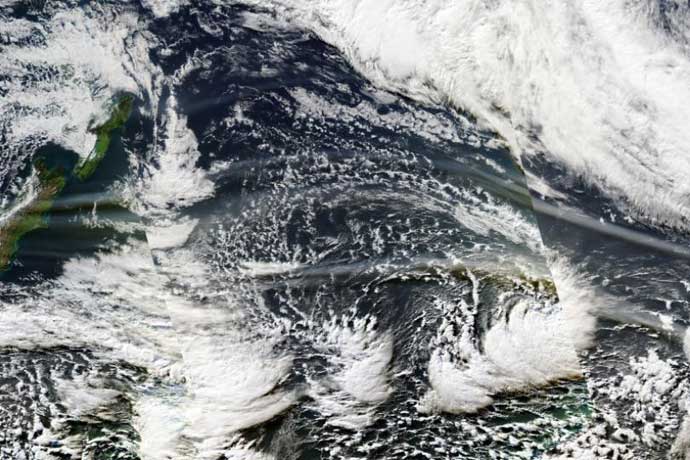Full heat: Why is the weather getting more extreme?

It's 43 degrees Celsius outside, although with 25 per cent humidity in air it feels like 47 degrees Celsius ("feels like," being a scientific parametre, called heat index). Still it's not too bad. A large swathe of the country — from Jhansi to Jharkhand, Bathinda to Banda — is in the grip of a scorching heat wave, with temperatures hovering above 45 degrees Celsius (one can only gag at how hot it feels like there).
Calcutta records 35 degrees Celsius, but so what? With 56 per cent moisture in the air it feels like 43 degrees Celsius. Chennai is panting at 32 degrees Celsius: with nearly 60 per cent humidity in air, there's no relief there. Palam in National Capital Region takes the cake. It has been hazy, dusty and killing at 48 degrees Celsius for the last two days.

So what's going on? What's wrong with our weather? Is it just a freak thing or are we going to get slow-fried by the weather and die?
The bad news first
The scorching heat wave does hint at an inhospitable future we have never seen before. The last three decades have been the hottest in human history. And 16 out of 17 super hot years on planet Earth have taken place in this century. Scientists are saying: expect each year to get hotter than before.
Not just hotter
Expect the weather to become more extreme. Unreasonable heat, unseasonal rain and hailstorms, unbearable cold. Not just India, globally, torrential downpours, typhoons and droughts have taken hold. Consider Britain this year: the shivering Siberian blasts put the country in the freezer this spring. Now the weather pundits are sounding out an alert: Cold weather is over, as the country is about to become hotter than parts of Turkey and Spain.

Really bad news
Now comes the really bad news: the human body is pretty resilient. It can go without water for three days, without food for three weeks, but it starts falling apart above 41 degrees Celsius. That's the temperature at which the proteins in human cells start changing. Somewhere between 41 degrees Celsius and 54 degrees Celsius, the changes become irreversible leading to cell death. Too many cells dying too fast can damage the brain, the kidneys, the heart, leading to collapse.
What's happening?
Why is the weather getting more extreme? What does the future hold? Scientists are now trying to understand what is behind these changes and if the Earth is now entering a more unpredictable period.
Five factors are believed to be behind what's going on:
Heated cities: IIT and Caltech scientists have shown recently how cities are getting hotter over the last three decades.
Environment boundaries: Human activity has broken four of the nine environmental factors critical to humanity's future (carbon dioxide emission, species extinction, Ozone depletion, land use change and so on). If stretched too far, the Earth's environment could be altered forever.

Jet stream: Some meteorologists say jet stream — or the constantly shifting, high-speed, narrow river of air, 30,000 feet above earth, which normally guides storms around the globe — is getting stuck, again because of human action. And that's what is bringing in the heat waves.
Angry oceans: The periodic warming of the central Pacific (think El Niño) which can lead to overall warmer temperatures across the globe, often making things extreme. There's also the shrinking of Arctic sea ice (although it's an idea that has not wholly been accepted but is gaining ground.)
Are things looking up?
A lot of the record smashing temperatures, killer heat waves, weak monsoons or pounding storms around the world have been blamed on the El Nino, a phenomenon characterised by warming waters in the eastern Pacific Ocean. The spread of Zika is also probably linked to the environmental conditions that help mosquitoes to thrive.
Climate experts have now reported that El Nino, which made 2016 the hottest year on record, has dissipated. The temperature of the Pacific has cooled, making it difficult for El Nino to come back for another two to seven years. And La Nina, the cooling counterpart to El Nino, is coming. It's expected to bring down global average temperatures and give a boost to the Indian monsoon.
Finally time to breathe a sigh of relief.

